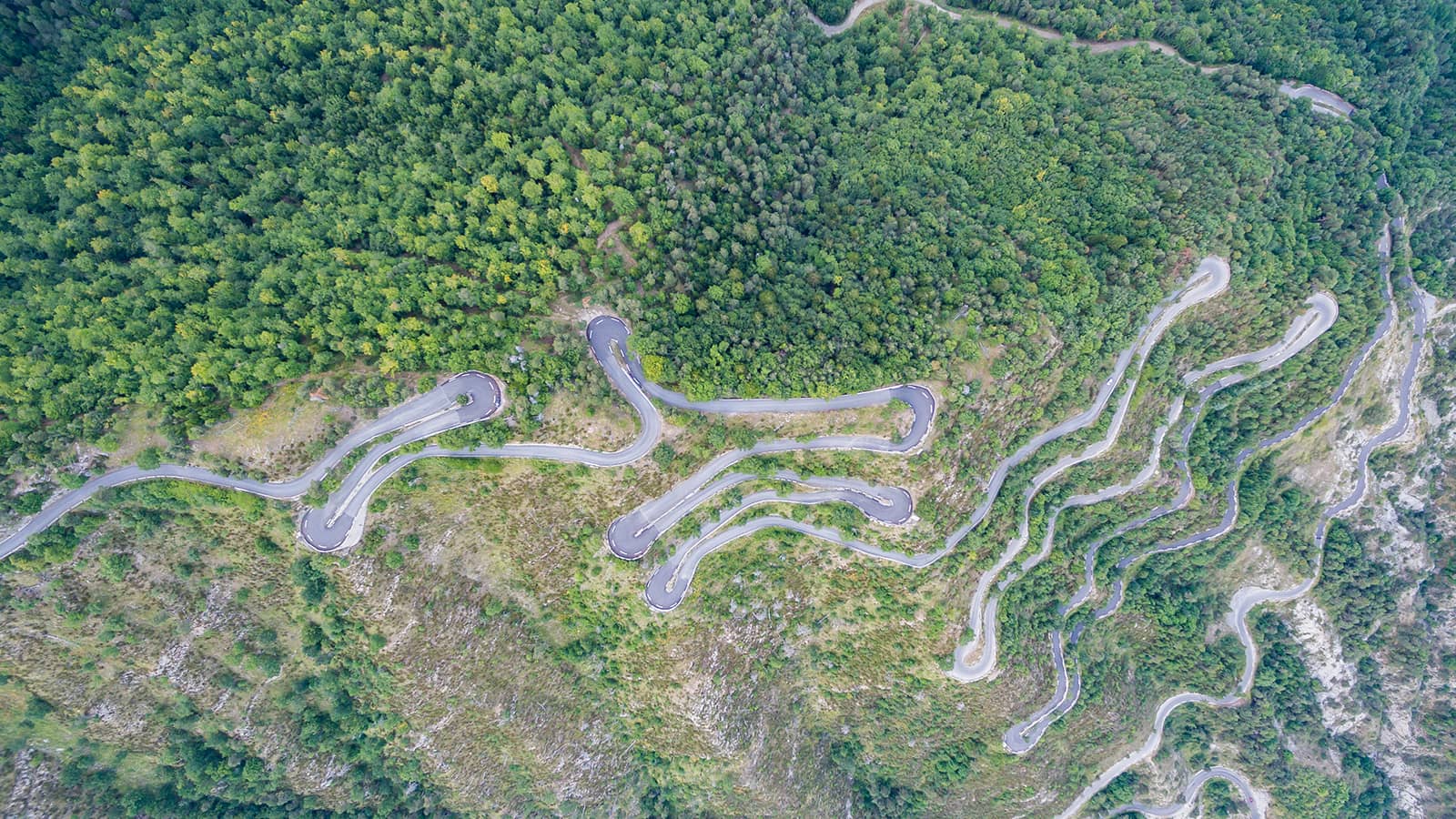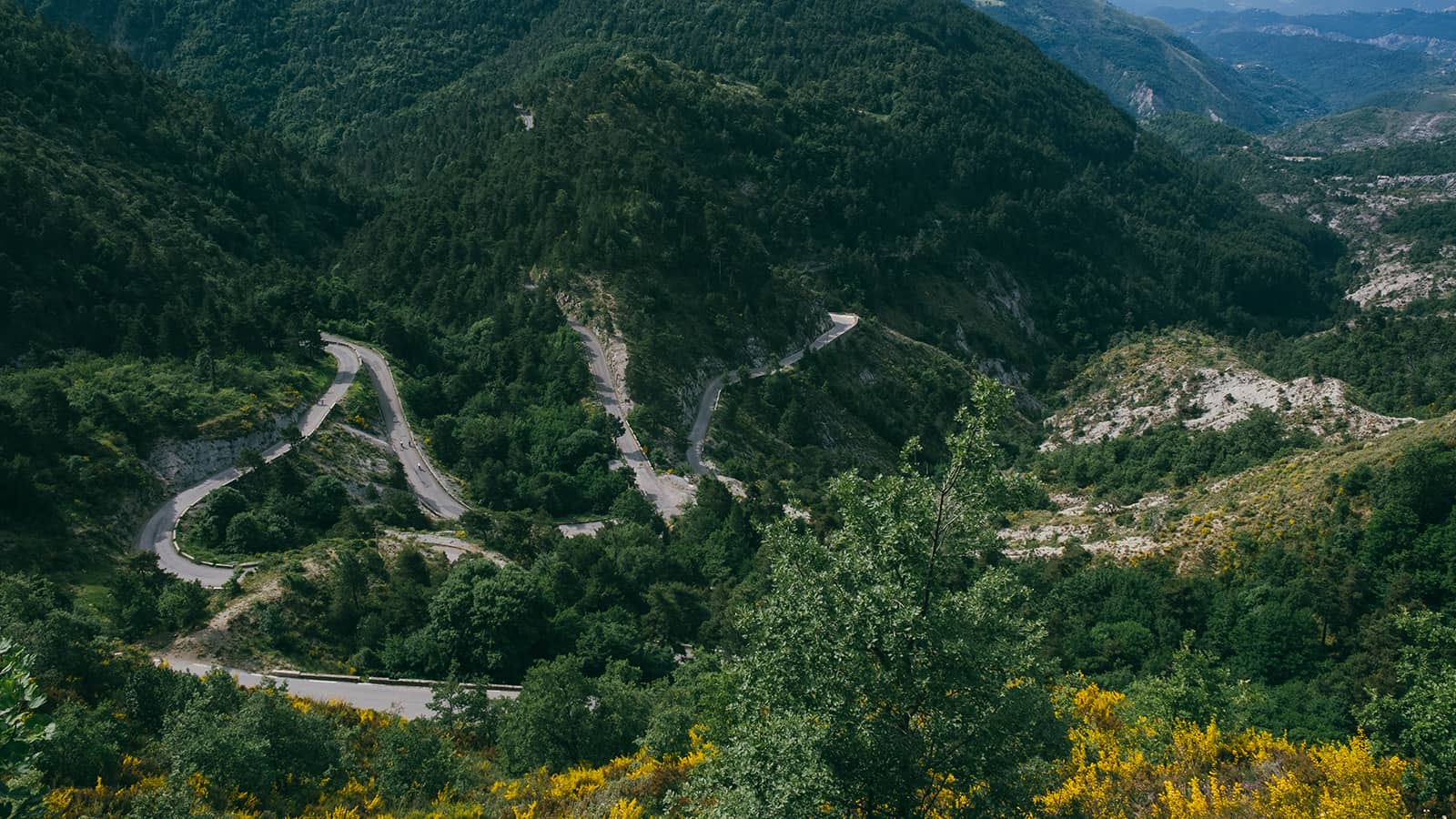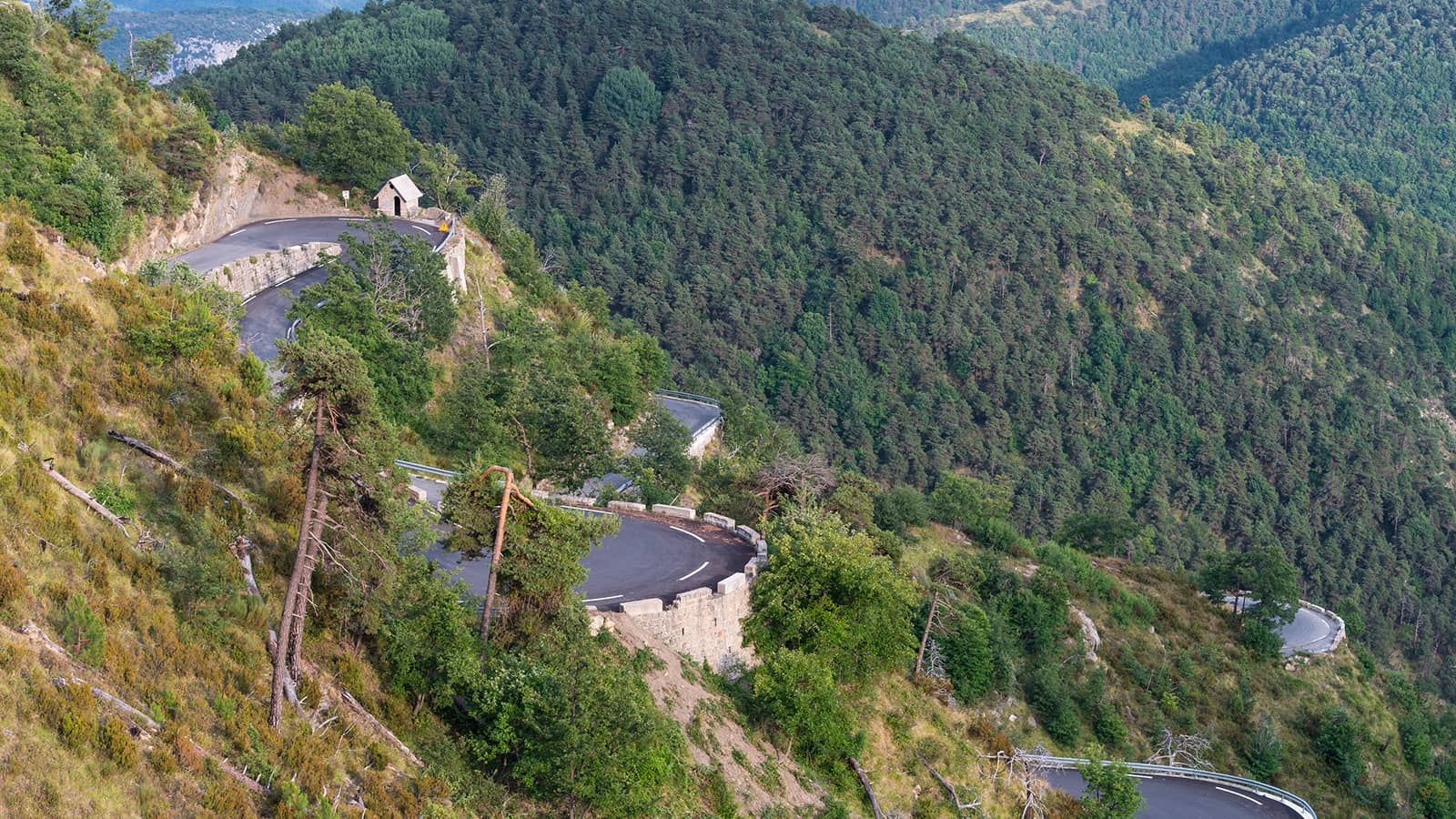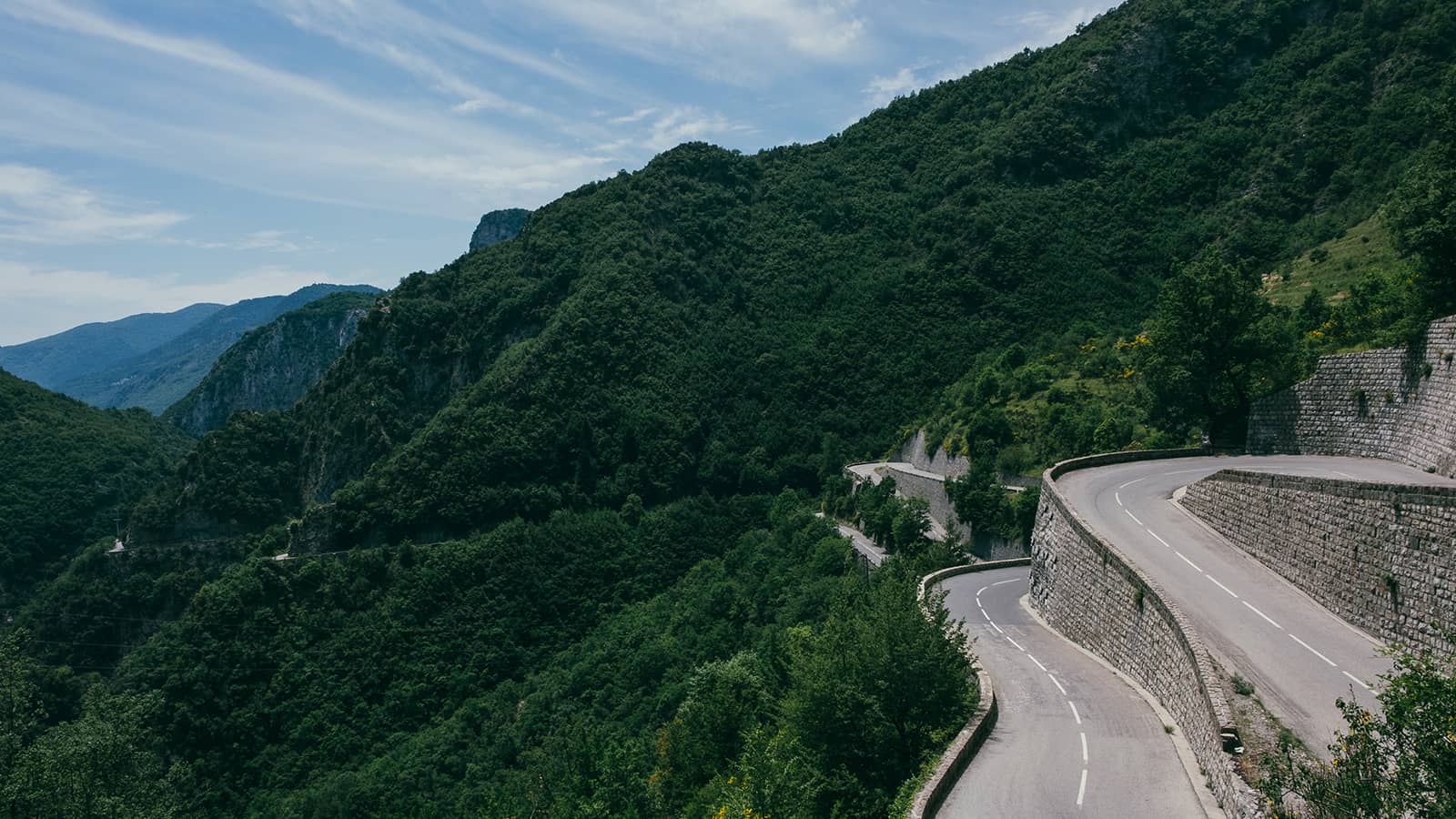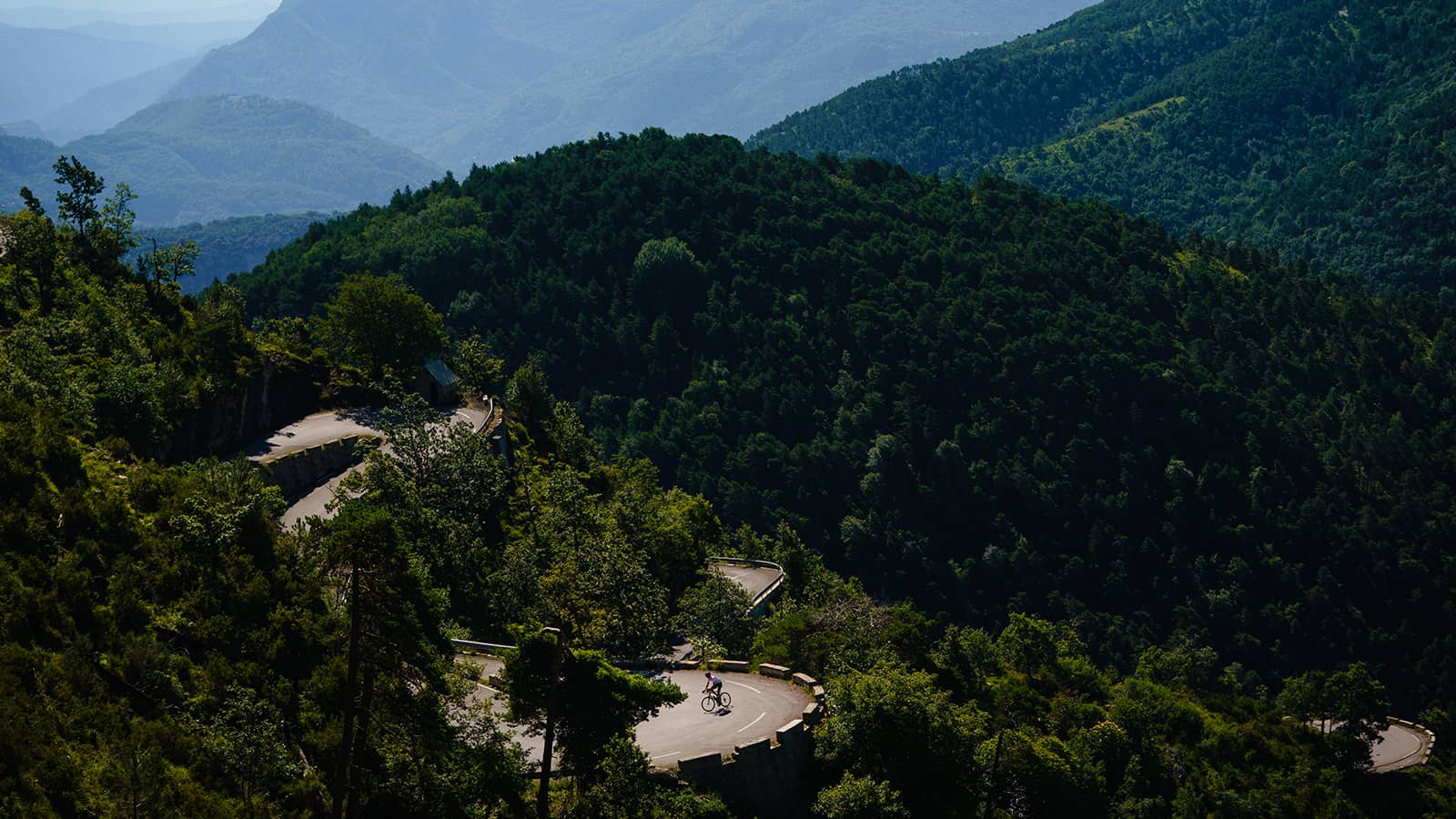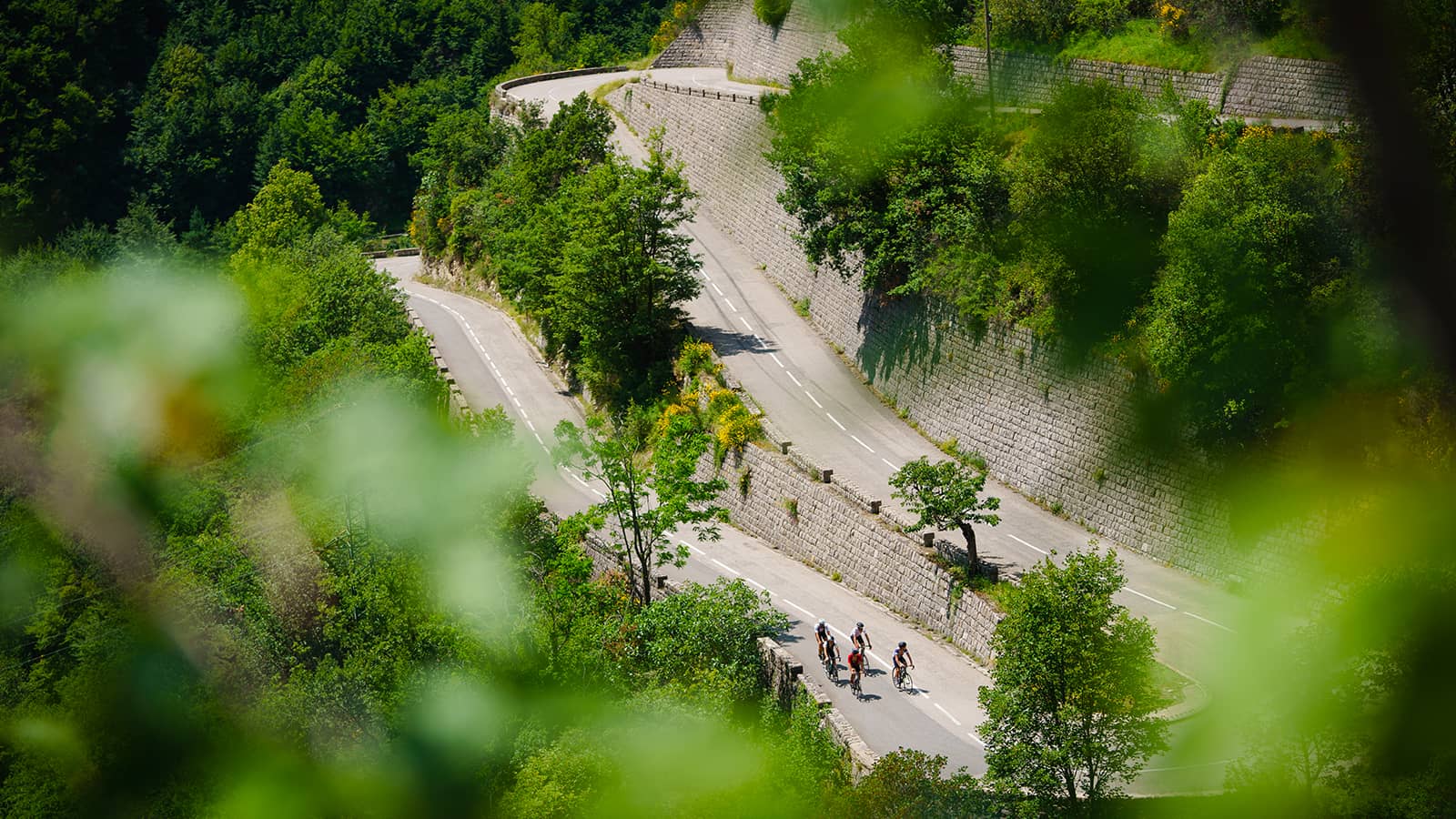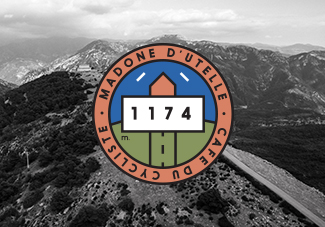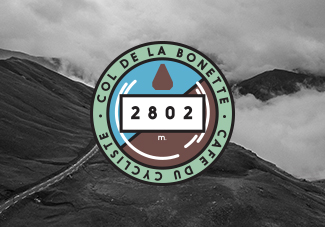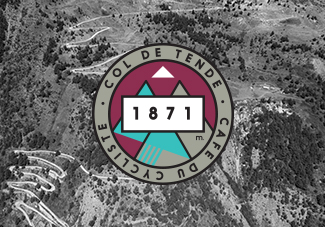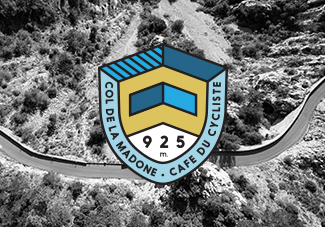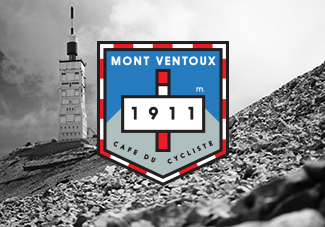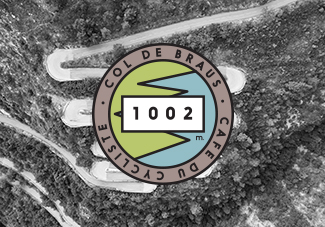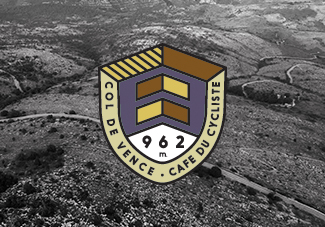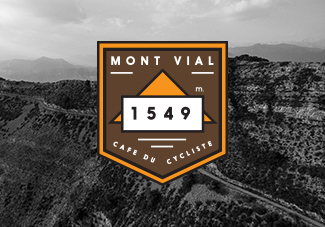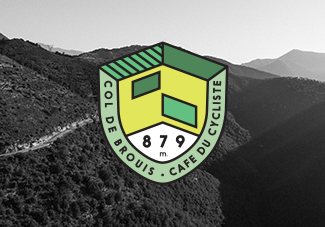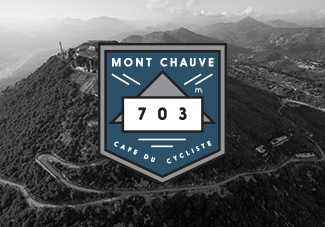Col de Turini: Nos montagnes à la carte #7
The thick forests of the Col de Turini are testament to the unpredictable weather on this, the highest of the coastal climbs near Café du Cycliste’s home town of Nice.
Even close to the top of the heaped switchbacks that take riders closer to 1,604m, the sea can still be glimpsed, and warm, wet, maritime air regularly drifts inland and buffets the mountain, leading to downpours on its slopes
Across its sylvan slopes thread innumerable trails and roads. Some are fit only for wild boar, deer and, in the autumn, an army of people attracted by the wild mushrooms that thrive in the cool damp shade of the chestnuts, larch and pines. Some of the best chefs in Nice have been spotted collecting mushrooms by hand, to serve in the finest Riviera restaurants that evening.
Piera Cava, the village highest on the Turini’s flanks, has an annual mushroom festival where freshly picked delicacies are served alongside wild boar sausages and local wine.


